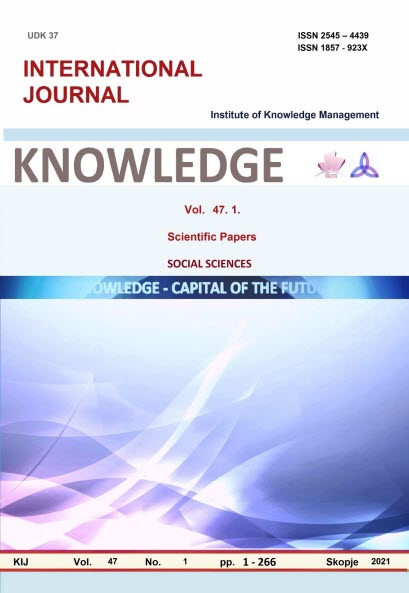ANALYSIS OF REVENUE AS REPORTED IN THE ENTERPRISE’S FINANCIAL STATEMENTS
ANALYSIS OF REVENUE AS REPORTED IN THE ENTERPRISE’S FINANCIAL STATEMENTS
Author(s): Rositsa IvanovaSubject(s): Business Economy / Management
Published by: Scientific Institute of Management and Knowledge
Keywords: financial statements; revenue; methodology; analysis; management
Summary/Abstract: Enterprise’s financial statements may be defined as structured presentation of the information about the financial position, financial performance and cash flows in the form of: assets; liabilities (payables); equity; revenue; expenses; cash inflows, outflows and net cash flows. Based on this information, one could analyse revenue and expenses, financial performance, financial position, cash flows and effectiveness of the overall business of the enterprise.The object studied in this publication refers to the revenue of enterprises, which apply the national accounting basis of the Republic of Bulgaria – the National Accounting Standards, and its subject – to the specific directions of the analysis and the methodologies for revenue analysis.The aim of this publication is to present the plenty of opportunities and methodological directions of the revenue analysis as reported by the enterprise’s financial statements, and in particular, the Statement of revenue and expenses.The data in the enterprise’s Statement of revenue and expenses may be used for analysis in the following methodological directions: overall evaluation of revenue; analysis of costs per revenue of BGN 100 (revenue effectiveness); analysis of net sales; analysis of revenue-based return with regard to the revenue effectiveness; analysis of net sales-based return (return of sales); analysis of return on the basis of net sales of products with regard to the total cost per products of BGN 100.In terms of the overall evaluation of enterprise’s revenue, their amount, composition, structure and dynamics are subject to analysis. Such analysis is aimed at identifying the change of revenue – in aggregate, by groups and specific types of revenue, for the current period in comparison to the reference period, both as an absolute and as a relative value. For management purposes, one can identify the average growth and increase rates of revenue for a long time period, characterise their development trends, forecast the expected sales, etc.When analysing the costs per revenue of BGN 100, one can identify the impact of the direct factors on the dynamics of this indicator. In their nature, these are the total amounts of costs and revenue of the enterprise. Their impact may be broken by groups and by specific items of enterprise’s costs and revenue. Therefore, one could define the impact strength and direction of any item of costs and revenues on the dynamics of revenue effectiveness. Based on the obtained information, the enterprise’s management is able to make timely, objective, justified and proper decisions for the management of enterprise’s revenue and its effectiveness.Costs per revenue of BGN 100 are directly related to the net revenue-based return. Therefore, the factors that affect the change of the indicator that characterises revenue effectiveness, have impact on the change of revenue-based return.The date from the Statement of revenue and expenses may be used to analyse the amount, composition, structure and dynamics of net sales. The opportunity to identify the profit from sales of products, goods and/or services in aggregate, and, on this base, to calculate the net sales-based return – an indicator that characterises the effectiveness of the enterprise’s operations, is crucial for the management.
Journal: Knowledge - International Journal
- Issue Year: 47/2021
- Issue No: 1
- Page Range: 71-77
- Page Count: 7
- Language: Bulgarian

